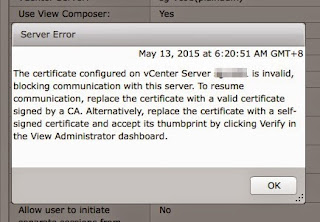VMware vCenter Server High Availability (VCHA)
Recently, I got into a discussion with my colleague regarding vCenter Server High Availability (VCHA) and a good discussion on the area where VCHA could be of use.
Before we start, I like to summarize the few questions that always got asked during my course of work and as well when I teach vSphere Install, Configure and Manage course.
What is VCHA use for?
It is really meant for local site availability. Where a lost of vCenter Server can create an outage to other management components where vSphere HA RTO is not sufficient or vSphere HA is not possible to bring up the vCenter Server.
Can VCHA be used in a stretched cluster setup and how should we plan to place the nodes?
Yes. You will definitely have two sites in a stretched setup. And if you like to have VCHA implement in such a setup, you will need to have a 3rd site or minimal a separate cluster at the passive node site. Typically you will have active node at site 1, and passive node with witness node at site 2 where witness node is on a separate cluster at minimal or a 3rd site recommended. In the case, where active node lost connection to witness node, the passive will be promoted to active node.
What is the requirements for VCHA?
VCHA is using a continuous replication which also means it require a some high requirement. A minimum is 1G with 10ms RTT. You will also to separate network for VCHA network between active, passive and witness node where it is must not be part of management network and not have a default gateway. Reference: 1, 2
So what are the failure scenario? Reference: 1
- Active node is isolated from Witness node.
Failover happens. Passive node become Active Node. Degrade state till passive node is resume. - Passive isolated from Witness node.
VCHA in degraded state. No failover. - Witness node isolated from active and passive node.
VCHA in degrade state. No failover.

Comments